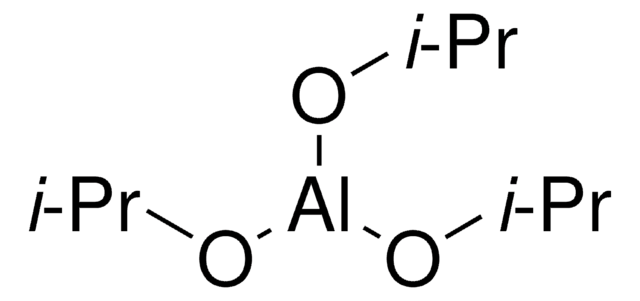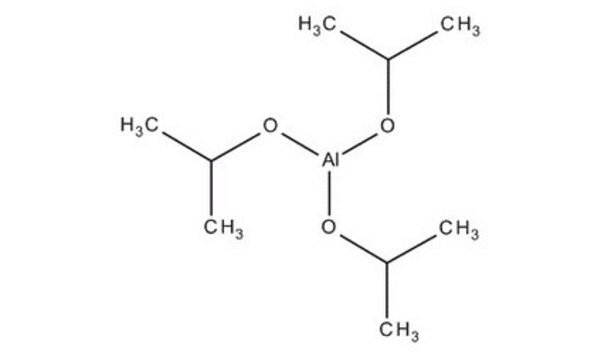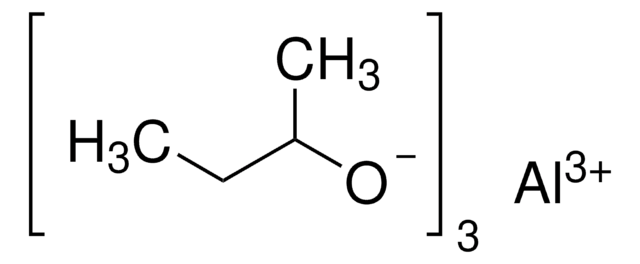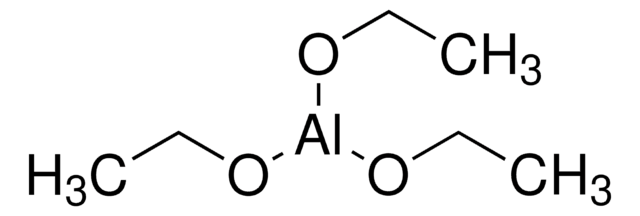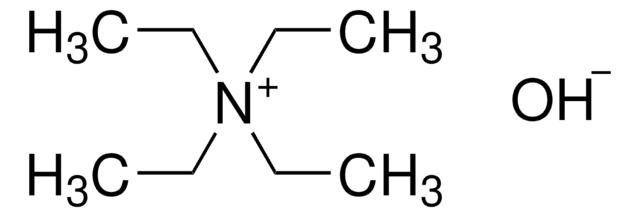229407
Aluminum isopropoxide
≥99.99% trace metals basis
Synonym(s):
AIP, Aluminum isopropylate, Aluminum triisopropoxide
About This Item
Recommended Products
Quality Level
Assay
≥99.99% trace metals basis
form
powder and chunks
solid
reaction suitability
core: aluminum
reagent type: catalyst
mp
128-133 °C (lit.)
density
1.035 g/mL at 25 °C (lit.)
SMILES string
CC(C)O[Al](OC(C)C)OC(C)C
InChI
1S/3C3H7O.Al/c3*1-3(2)4;/h3*3H,1-2H3;/q3*-1;+3
InChI key
SMZOGRDCAXLAAR-UHFFFAOYSA-N
Looking for similar products? Visit Product Comparison Guide
General description
Application
- Sol-gel precursor to synthesize ZnAl2O4 powders for transparent ceramics.
- Precursor material for the fabrication of nanosized SAPO-34 zeolites with a 4-fold increase in catalytic lifetime and significantly increased selectivity.
- A starting material to prepare long-persistent luminescence materials for display devices and bioimaging.
- Coating material to fabricate electrodes for lithium-ion batteries to enhance cycling stability and performance.
- A catalyst for alkylation of resorcinol with camphene.
Signal Word
Danger
Hazard Statements
Precautionary Statements
Hazard Classifications
Flam. Sol. 1
Storage Class Code
4.1B - Flammable solid hazardous materials
WGK
WGK 1
Flash Point(F)
60.8 °F - closed cup
Flash Point(C)
16 °C - closed cup
Personal Protective Equipment
Choose from one of the most recent versions:
Already Own This Product?
Find documentation for the products that you have recently purchased in the Document Library.
Customers Also Viewed
Articles
Nanostructured Materials Through Ultrasonic Spray Pyrolysis
Advanced Inorganic Materials for Solid State Lighting
Nanostructured Materials Through Ultrasonic Spray Pyrolysis
Nanomaterials are considered a route to the innovations required for large-scale implementation of renewable energy technologies in society to make our life sustainable.
Our team of scientists has experience in all areas of research including Life Science, Material Science, Chemical Synthesis, Chromatography, Analytical and many others.
Contact Technical Service